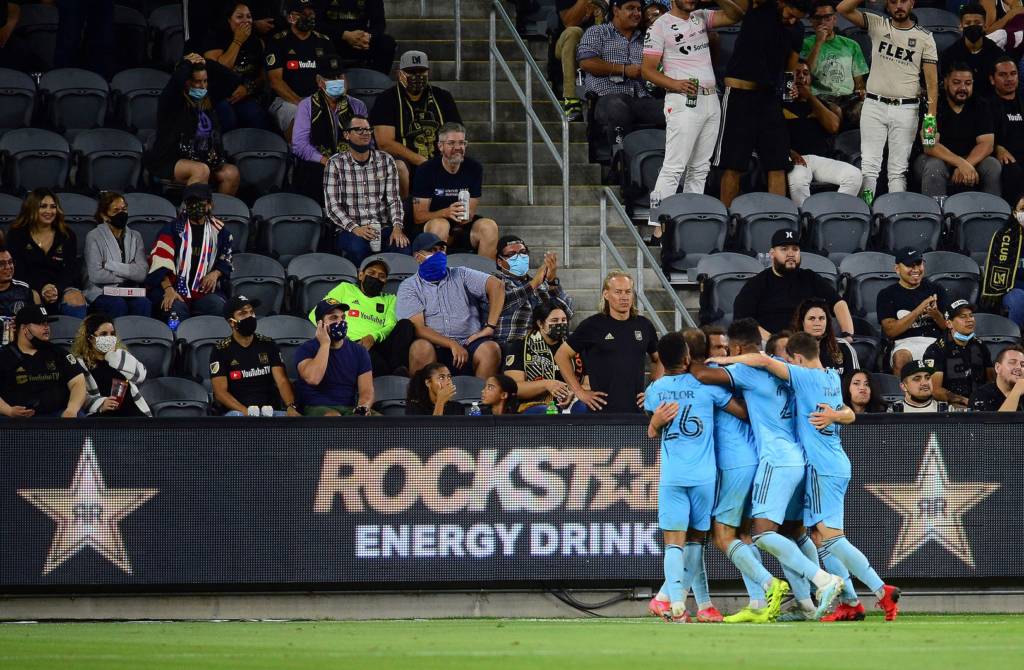ST. PAUL, Minn. — As far as U.S. Soccer is concerned, there is no recognized fourth division in the United States. This is not for want of ambition, as the National Premier Soccer League does its part to help fill that void. A sprawling league, the NPSL currently lists 90 teams on its official website, split among 14 conferences, the latter of which are grouped into four regions.
In normal times, the top teams from each conference compete in playoffs that feed regional winners into national-semifinal games. Ultimately, a lone champion is crowned each year. In the middle of a global pandemic, however, nothing.
On March 26, 2020, the NPSL canceled its 2020 season.
It was a decision that had broad support among the league’s members. For teams often run on narrow margins by people with day jobs, the uncertainty introduced by COVID-19 and the uneven response by various governments — both local, state, and federal — threatened to narrow those margins even further. Would sponsors support local teams playing in front of empty stands? How many sponsors could continue to afford to offer their support in the wake of an economic downtown? Could teams afford to forego ticket revenue? How soon would it be deemed safe to even hold practices?
Better, it was decided, to take a summer off and hope for a return to play in 2021.
In Minnesota, three teams from the NPSL’s North Conference all expressed agreement with the league’s decision in conversations with the author held last spring. Those three teams were still left to ponder how they would each maintain the momentum they’d built since joining the North Conference ahead of the 2017 season, knowing there would be no NPSL games that summer. Come 2021, would these teams and their players, fans, and sponsors be able to pick up where they left off? Or, would COVID-19 deal an irreparable blow to three local soccer clubs that had spent half a decade working toward achieving the kind of stability that can be elusive for U.S. amateur teams playing in a national league?
A year later, Minnesota’s NPSL teams are looking forward to the return of league play this weekend, and Governor Tim Walz has just provided a timetable for outdoor events to return to full capacity by the end of the month. This current May has painted an optimistic picture of the summer to come, but a full appreciation of that perspective requires a look back at all the uncertainty that preceded it.
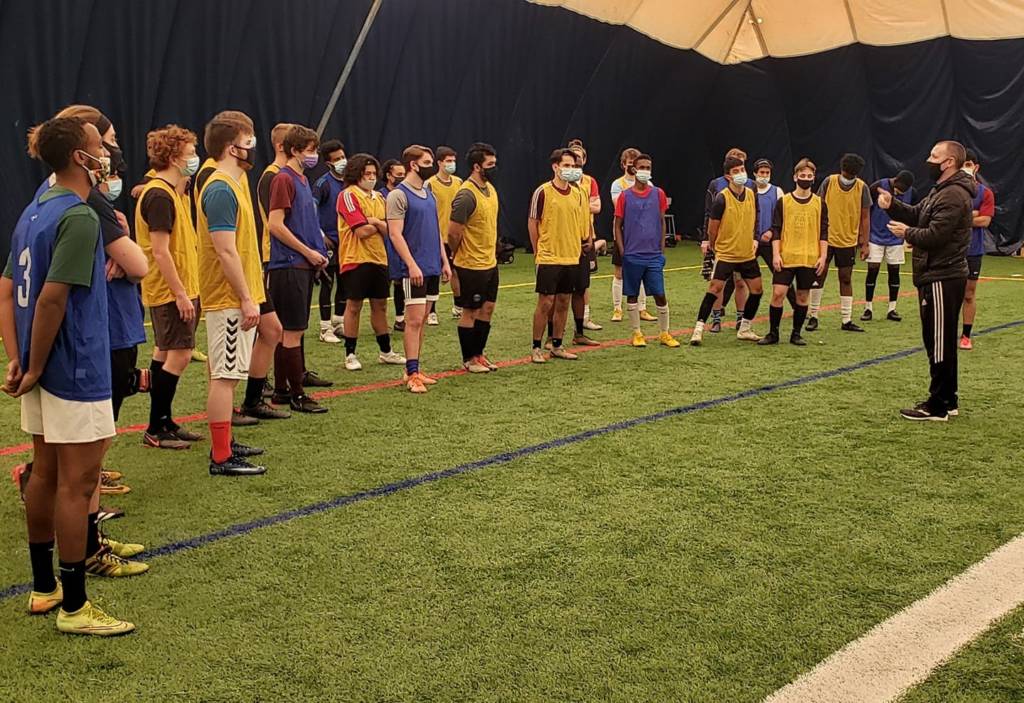
Rebuilding Revenue
As amateur soccer clubs, Duluth FC, Minneapolis City SC, and Rochester’s Med City FC generate income primarily from three sources: ticket sales, merchandising, and sponsorships. And these three particular clubs strike different balances between those sources.
Canceling an entire season’s worth of games in 2020 meant eating non-refundable liability insurance premiums and various other costs that come with running an NPSL team. Additionally, it meant abstaining from taking or offering to return sponsorship money, as well as foregoing money from ticket sales and rolling 2020 season tickets forward in hopes of a 2021 season.
The mood shared by Duluth FC general manager Tim Sas, Med City general manager Frank Spaeth and Minneapolis City chairman Dan Hoedeman last spring was one of determined concern. But that determination ultimately bore encouraging results.
Taking into account season tickets from 2020 credited to the 2021 season, all three clubs report season ticket numbers above 2019 tallies, with Minneapolis City projecting it may well achieve a 30-percent increase in season-ticket holders once all is said and done.
“We’re presently somewhere between 110 and 115 percent of our stretch goal [of 400] [season ticket] memberships for 2021,” said Hoedeman. “And I thought we would undershoot our stretch goal, because who knew what this year was going to be?”
Duluth and Med City, which bring in more sponsorship revenue than does Minneapolis City, have both said they have been able to surpass 2019 sponsorship dollars. And as of Wednesday, the Crows were just able to achieve the same. But the trio noted that securing sponsorships took a lot more work than in years past, with some sponsors not returning.
“We were very successful with quite a few small, local companies supporting in decent amounts,” Sas said. “But we have noticed that those companies are struggling more this year, and some of them did not come back. By contrast, we’ve noticed that the bigger companies are indeed able to do more. That’s one area that has been a shift. I’m not sure if it’s either good or bad. Personally, I would want to have more sponsors involved.”
Down in Rochester, Med City was negotiating sponsorship agreements well into May that would have previously been agreed upon months earlier but was able to eventually finalize those arrangements by drawing on goodwill earned last year.
“We didn’t do anything with sponsorships in 2020 in terms of collecting revenue,” Spaeth said, “But anything that we did do in 2020 — digital, social media, whatever — we still included those sponsors that were going to be there.
“We were thinking long-term. It was important for us to be able to come back in 2021 and say, ‘We’re back, we’re going to do things as well as we can under the circumstances, and by the way, here’s all we did for you in 2020.’”
On the merchandising front, Minneapolis City has had notable success for an NPSL team for several years running, moving innovatively designed jerseys and other branded clothing via its website, as well as a brick-and-mortar club shop located in the Standish neighborhood of Minneapolis. In its year away from playing in front of fans, clothing sales continued unimpeded.
“We are way ahead of where we were in 2019,” said Hoedeman. “Part of that was that we launched new jerseys in 2020, and we did that birthday-kit thing which blew up. We’re in rude health.”
Two hours north up Interstate 35, BlueGreens gear was also being packed and shipped.
“Merchandise sales have really gone way up for us,” noted Sas. “In the North Conference, we’re all looking up at Minneapolis City, because they have done a superlative job. For our own part, for our Thanksgiving sales and Christmas sales, we have done double our best year in the past.
“I’m very thankful that our dedicated fan base — these people have responded, like, ‘Boom.’ It was literally push-of-a-button. So that’s been fantastic.”

Calculating Capacity
When the author spoke to Sas, Spaeth, and Hoedeman earlier this week, Governor Walz had yet to make his Thursday announcement about the relaxing of distancing guidelines. The previous executive order in place had limited attendance at outdoor sporting events to a maximum of 27-percent capacity.
Asked about the prospect of only being able to fill about a quarter of their home grounds, the three club officials offered different takes.
For Sas, there was a bit of relief. In 2019, Duluth FC played its home games at Ordean Stadium with its 2,000-spectator capacity, as its previous home ground was undergoing renovations. But in 2021, the BlueGreens will be returning to Duluth Public Schools Stadium, which boasts a capacity of 3,500. Having surpassed crowds of 800 people and on occasion having flirted with breaking 1,000, the extra room accompanying Duluth’s move back to PSS Stadium offered Sas a bit of comfort amid a spring of uncertainty.
Down in Rochester, Spaeth took the original attendance cap as a mark to be met. Rochester Regional Stadium has a listed capacity of 5,000, but just 925 would be allowed for Mayhem games under a combination of state and facility guidelines at the time of interview.
“We’ve had nice-weather games where we’ve certainly gotten more than that [in attendance],” said Spaeth. “The reality is, if we can get 925 in per game, that wouldn’t be horrible. So, we’re trying to take it as a challenge. If that’s all they’ll let us get in there, let’s see if we can hit it. Trying to get the fan base excited about that and encouraging people to buy their tickets beforehand.”
In Minneapolis, the Crows call Augsburg College’s Edor Nelson Field their summer home. With combined bleacher seating and standing room for 1,700 people, the possibility of playing games at 27-percent capacity was a significant concern.
“Around 25 percent, we were super close to having sold our allocation of tickets via just [season tickets].” Hoedeman looked ahead: “Hopefully it goes up. That would really pinch us, and that would be a bit difficult because it would obviously impact the experience.”
Hoedeman said Minneapolis City had not yet promoted its home opener, but in the wake of Governor Walz’s announcement this week, the Crows may make a late push for single-game ticket sales for their tilt against Fargo-based Dakota Fusion in Minneapolis on May 14.
The three teams — as none own the facilities they call home each summer — may still have to meet conditions required by their hosts — such as the completion of a COVID questionnaire by each person passing through turnstiles. But the decreasing likelihood of turning away paying customers is no small victory for NPSL sides that count ticket sales as a significant revenue source.
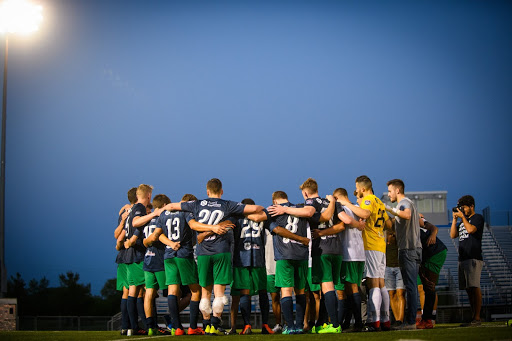
Helping Hosts
U.S. Census Bureau data from its 2018 census lists a population of 221,587 for the Rochester metropolitan statistical area, and a population of 278,799 for the Duluth metropolitan statistical area. Dwarfing those figures are the over four million people that reside in the Minneapolis-St. Paul combined statistical area. The amount of sporting talent a major metro can supply on its own confronts teams like Duluth FC and Med City FC with the need to recruit out-of-town players — most often collegiate players looking for competitive minutes over the summer.
That need, shared by a large number of NPSL teams across the country, was one of several motivating factors in the league deciding to cancel its 2020 season amid the pandemic. Many players were hesitant to travel last year, and many host families were wary of housing unvaccinated guests for several months.
With Minnesota ranking favorably among U.S. states in its rate of vaccination, confidence has increased to the point that both Sas and Spaeth were able to secure enough host families for the coming summer to put together competitive rosters. But this year, those normally common arrangements took more effort to reach.
Prior to last week, Spaeth and his wife were looking at lodging four players in their home, but a lengthier pursuit of host families than in seasons past eventually bore fruit, reducing this summer’s projected grocery bills.
This month, players from Chile, Brazil, Sweden, Norway, Germany, Israel, and elsewhere — all playing their college soccer in the U.S. — are arriving in Rochester. Per Spaeth, over 80 percent of players and staff on his team have received at least their first shot, after encouraging players to try and get vaccinated for COVID-19 prior to joining up with their teammates for the summer. Those that could not are using the opportunity of landing in the backyard of the world-famous Mayo Clinic to get their first dose.
“Being Med City, you would expect us to be leading that charge, with the Mayo Clinic being our main employer in town and one of our big sponsors. We’ve got a great partnership with them,” said Spaeth.
A similar process unfolded in Duluth, with Sas and staff considering alternatives to the use of host families, but ultimately enough households volunteered that a novel approach was not needed. Aiding in that process was Duluth’s shirt sponsor, St. Luke’s — a hospital system that spans northern Minnesota and northern Wisconsin.
Per Sas, as part of St. Luke’s work with the BlueGreens, the hospital system will be vaccinating Duluth FC players and staff who are in need of inoculation.
As of publication, Duluth FC had announced the addition of players originally hailing from Canada, England, Scotland, and South Africa to bolster a roster that also includes local talent from the Twin Ports area.
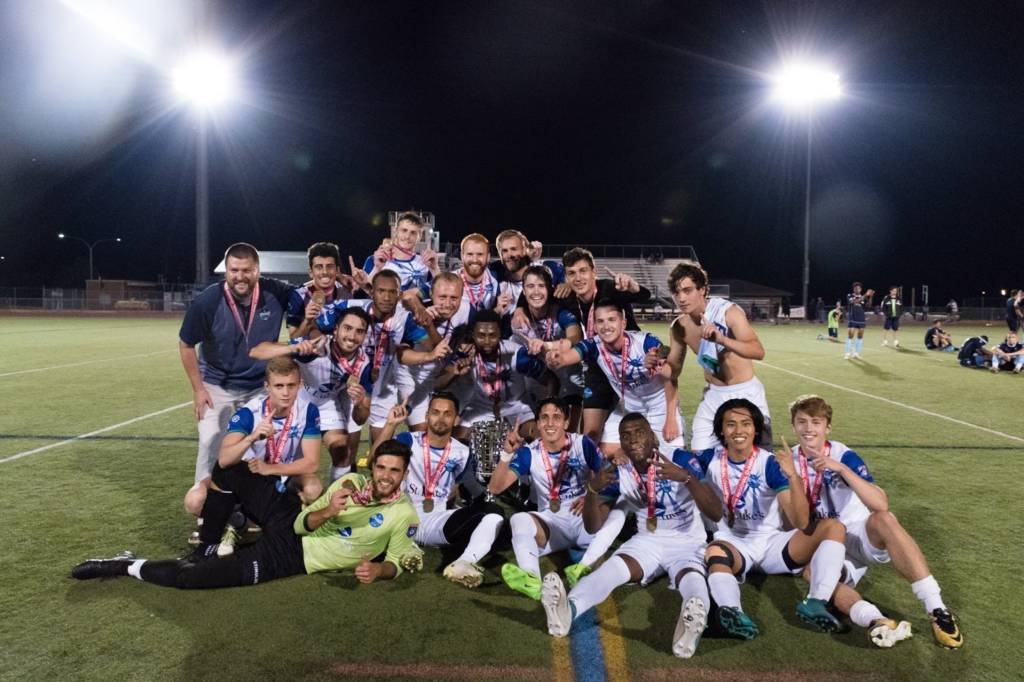
Gregarious Growth
That the three aforementioned NPSL teams have increased their sponsorship revenue, two have found lodging for players recruited from afar, along with all three clubs increasing season ticket counts after missing an entire year, is grounds for joy among lower-division soccer fans in Minnesota. Adding an extra bit of excitement is that the North Conference will also be new grounds for Joy.
Joy Athletic Club, that is.
The Saint Paul-based youth soccer organization Joy of the People is launching its own NPSL side, Joy Athletic Club. The Goats are set to play their home games at Oriole Stadium in St. Louis Park, taking the field this Saturday in their league debut when they host Dakota Fusion.
Joy’s artistic director and co-founder Ted Kroeten brings a lengthy resume to the task, having studied player development at professional club academies in Brazil, Paraguay, Portugal, Colombia, and Croatia.
Kroeten hopes that Joy Athletic can offer a proof-of-concept for the philosophies that guide Joy of the People’s youth coaching. Namely, per Kroeten, a focus on fun, free play, and a de-emphasis on expensive travel for youth clubs.
“Basically, we started out with this idea of free play as a missing piece,” said Kroeten. “As we did it, we saw it was more and more important. Major League Soccer is not really a pathway for [local] kids growing up because there are only a few spots, and most of the creative positions [on MLS rosters] are given to players from Argentina, Uruguay, or Brazil, and then they bring in U.S. players for workaday positions around the field.”
It is Kroeten’s hope that Joy Athletic can serve as the next rung up on a grassroots development ladder that prioritizes creativity and improvisation developed through an alternative approach to the highly structured one on offer from many traveling youth clubs.
In 2021, over half of the Goats’ roster will be comprised of players who played youth soccer for Joy of the People. In particular, Kroeten mentioned Mika Folstad, Emmanuel Iwe, Aiden Cavanaugh, Noah Kantorowicz, and his son, Zinedine Kroeten, as Joy of the People products to watch. Their shared background could translate into a highly entertaining style of play, and one that could prove a draw in the oft-physical North.
“The advantage will be that we’ll definitely go forward,” Kroeten said. “The disadvantage will be that we don’t know when to stop or go backward.
“They don’t just want to hustle up the middle and work really hard and get all sweaty. They want to make it nice and pretty. They want to put a ribbon on it. And that’s what you see in free play, and our hope is people will see that when we play.”
Joy Athletic’s technical staff shares a common history as well, with head coach Arinze “Ace” Ezirike a former U15 player of Kroeten’s, and assistant coach Lioul Minas a Joy of the People player since age eight.
The second half of 2020 did not offer the same kind of preparation for an inaugural NPSL season that a normal year would have, but Kroeten was able to arrange a trial run of sorts. Watching how Joy of the People products performed in the first division of the Minnesota Amateur Soccer League — where they squared off against a number of players that have found their way onto the 2021 rosters of other teams in the North Conference — instilled confidence that the Goats were ready for the NPSL.
A member of their soon-to-be crosstown rivals agreed.
“Joy having that many kids who know how they should play, and having played with each other, I think they can be really dangerous,” said Minneapolis City’s Hoedeman. “I tip them to be surprisingly good [for a first-year NPSL team].”
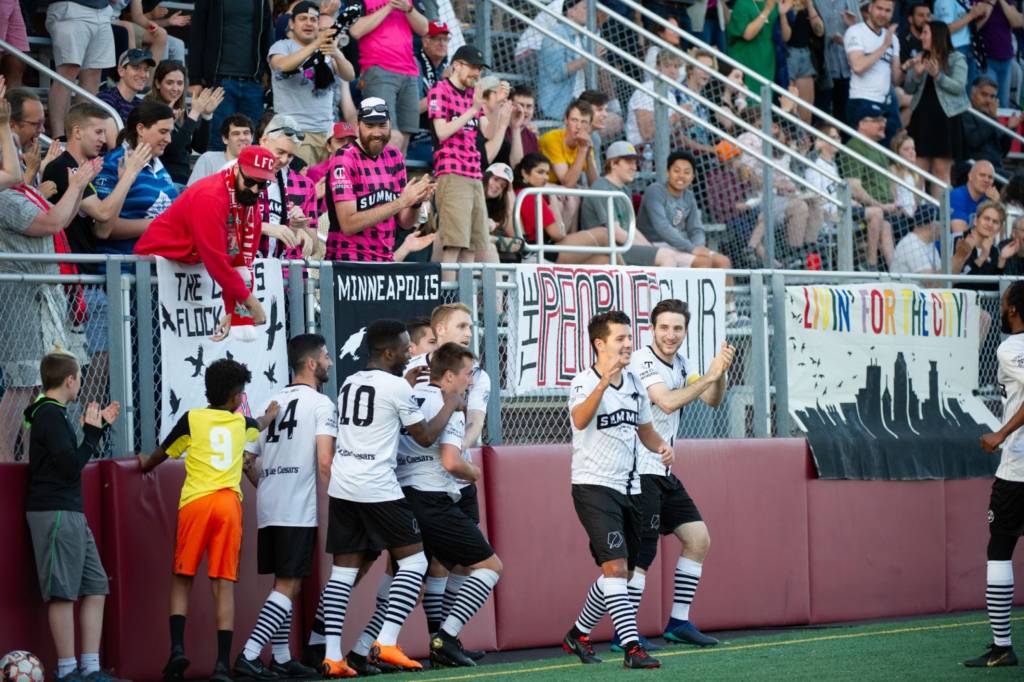
Already Ahead
For most of the last twelve months, mere survival was on the minds of Messrs Hoedeman, Sas, and Spaeth. But the NPSL’s North Conference has emerged from a lost year in what looks to be unexpectedly strong health. Far from the bright lights of the professional game, for people who run local teams on top of the full-time jobs needed to pay their mortgages, that should count as success in and of itself.
“The good thing about this year is, in a lot of ways, the pressure is off because we’re just happy to be playing again,” Hoedeman said. “In past seasons, we really felt a ton of pressure. Is the gameday experience going to be good? Are we making it better? Is the product on the field the best we can make it?
“Not that I’ve stopped caring about it, but it’s just going to be so great to play again. And you can feel that from the players. And you can feel it from the coaches and [our] volunteers. Everyone’s just pumped to get out and do it.”

